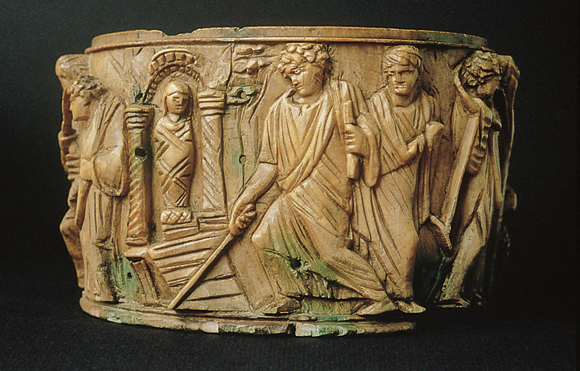Image Details

Museo Civico Archeologico, Bologna
Isaac and Lazarus. Abraham wields a knife, prepared to follow God’s command to sacrifice his son Isaac, when God, illustrated by a hand reaching from the sky in this fifth-century ivory pyxis, orders him to stop (Genesis 22:10–12). The ram to be sacrificed in lieu of Isaac stands below a tree.
Early Christian artists rarely depicted Jesus’ suffering, death and resurrection, but used other images to symbolize these events: The near-sacrifice of Isaac, or akedah, represented the crucifixion, while the Lazarus scene symbolized the resurrection. Together they illustrate the belief that Jesus’ resurrection portends the eventual resurrection of all who believe in him.
Between the Lazarus and akedah scenes on the pyxis, a vessel used to carry the Eucharist to the sick, appear depictions of Jesus healing the deaf-mute (Mark 7:32), the woman with the issue of blood (Matthew 9:20–22), the blind man (Matthew 9:27–31) and the paralytic (Matthew 9:1–8). These healing images would have held special appeal to the ill worshipers accepting the Eucharist, another symbol of death and resurrection: “the one who eats this bread will live forever,” Jesus declares in John 6:58.
